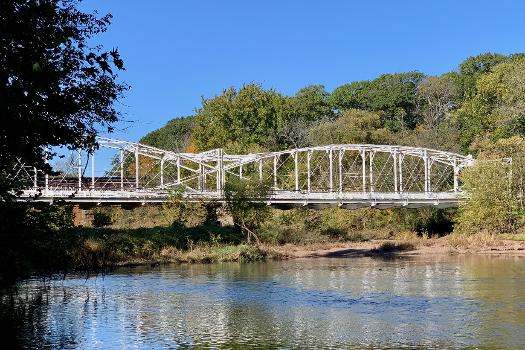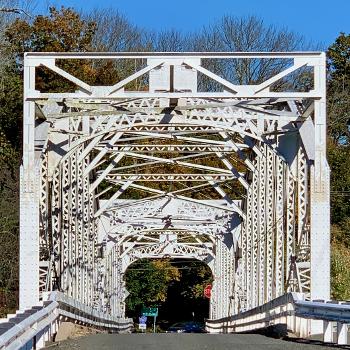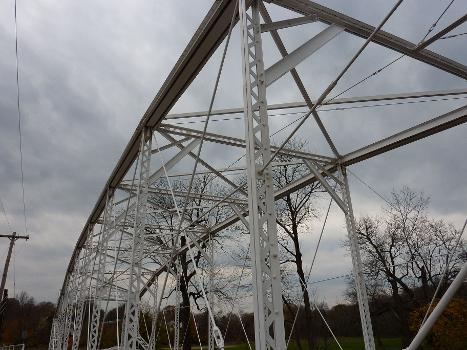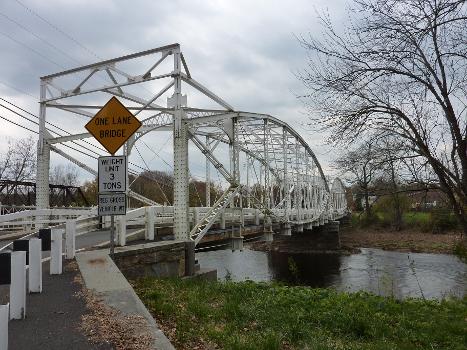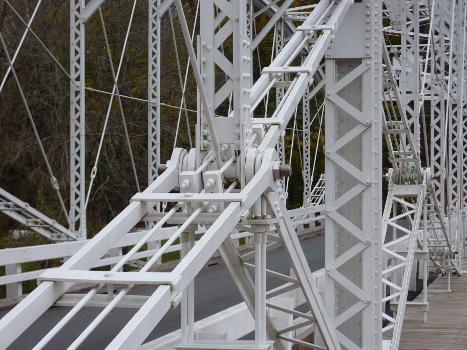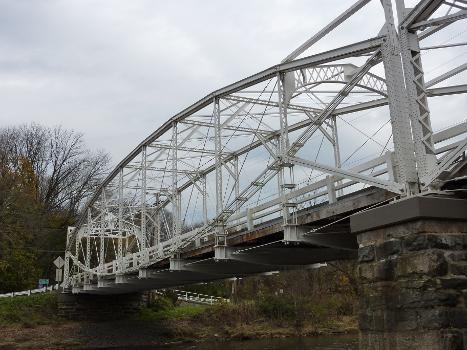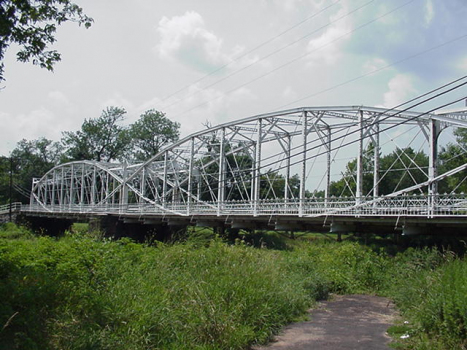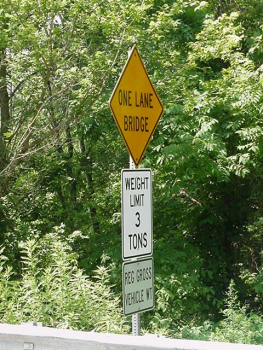General Information
| Other name(s): | Elm Street Bridge; South Branch Raritan River Bridge |
|---|---|
| Completion: | 1896 |
| Status: | in use |
Project Type
| Structure: |
Lenticular bridge |
|---|---|
| Support conditions: |
for registered users |
| Structure: |
Through truss bridge |
| Material: |
Steel bridge |
| Plan view: |
Structurae Plus/Pro - Subscribe Now! |
| Function / usage: |
Road bridge |
Awards and Distinctions
| 2016 |
for registered users |
|---|
Location
| Location: |
Neshanic Station, Somerset County, New Jersey, USA |
|---|---|
| Crosses: |
|
| Coordinates: | 40° 30' 33.90" N 74° 43' 37.29" W |
Technical Information
Dimensions
| main span | 43.01 m | |
| total length | 86.9 m | |
| deck width | 3.99 m |
Significance
Neshanic Station Lenticular Truss Bridge is significant because it was built by a prominent 19th century bridge building company; the lenticular truss, of which it is an example, is an unusual truss type compared with other more common trusses such as the single intersection Pratt; and it is the only bridge of its type left in the State of New Jersey. Berlin Iron Bridge Company was the exclusive builder of the elliptical or parabolic truss. Though the design was patented in 1878 by an American, William O. Douglas, the truss form was used as early as 1857 in Germany and 1854 in England. Douglas may have developed this design without knowledge of the German or English bridges. Nonetheless, it was his patent and the Berlin Iron Bridge Company that introduced this type of bridge to the United States. In 1889, the company claimed to have built over 90% of the iron highway bridges in New York and New England during the ten previous years. In the same illustrated catalog, it lists 664 bridges that were erected in twelve states. Neshanic Station Lenticular Truss consists of two 140'-7-1/2" spans. Plans for stiffening the bridge were proposed by the Board of Freeholders in 1932. This altered the appearance of the portals and added new steel sections to other structural members, but did not significantly change the bridge's appearance. The present proposed rehabilitation will not alter the appearance either.
Historic American Engineering Record, HAER NJ-31
Participants
Relevant Web Sites
- About this
data sheet - Structure-ID
20005819 - Published on:
02/10/2002 - Last updated on:
12/07/2021

